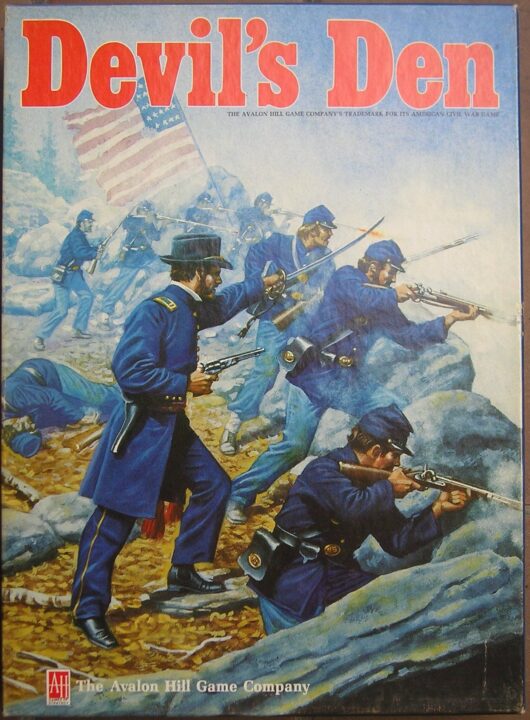Welcome to my review of Devil’s Den, the game that made my game group laugh, groan, and threaten to flip the table (twice). I wrangled my friends for several chaotic sessions so you don’t have to wander into hell blind. Curious if it’s a masterpiece or a devilish mess? Grab some chips and let’s see if this inferno is worth your fireproof gloves.
How It Plays
Setting Up
First, toss the board on the table (gently, unless you want to start a real fight). Each player picks their devil token. Shuffle the cards, share out tokens and place the fire crystals in their pretty pile. Don’t forget to argue over who gets to go first. My group spent more time here than I care to admit.
Gameplay
Turns go round the table. On yours, roll dice for movement, then tempt fate by picking a card or triggering a special ability. Players jockey for fire crystals, lay traps, and try not to make any new enemies (spoiler: you will). There’s enough backstabbing to make you doubt your friendships. Luck plays a big part, so hope your dice like you more than they like me.
Winning the Game
The first devil to collect five fire crystals and escape the board wins. Everyone else gets to stew in defeat (and plot for next time). If no one manages this after the last round, whoever has the most crystals claims victory. Expect a lot of shouting and dramatic flourishes as the final moves go down.
Want to know more? Read our extensive strategy guide for Devil’s Den.
Game Mechanics and Fairness in Devil’s Den
If you ever wanted to see your friendships tested by cardboard and plastic, Devil’s Den might be the game to do it. The first time I set the board up, my friend Tom groaned at the sight of the dice. I told him to relax—”There’s some strategy here,” I said. Boy, was I right… and wrong.
The biggest thing to note with Devil’s Den is the battle mechanic. Every fight gets decided by a dice roll. In my third game, I watched my carefully planned troop buildup get wiped by a single, lucky six from Amanda. She cackled, I sulked, and the mood turned from “strategic mastermind” to “random victim.” That’s not to say strategy never matters—but sometimes the dice matter more. When you hit that perfect combo of outsmarting your opponent and rolling well, it feels great. When you only have your clever moves and the dice hate you, it’s like eating ice cream with a fork—possible, but why?
Resource management, on the other hand, feels a lot more balanced. You have choices: push forward for a risky reward, or play safe and stock up. That’s where I scored my only win, slow and steady. Yet, the battle randomness hangs over every turn like a cloud. If you love games where everyone has a fair shot based on skill, Devil’s Den might drive you a little nuts. Luck is king here, and sometimes, the king falls off his horse and lands on your well-laid plans.
Still, mechanics mean nothing without player interaction—wait till you hear how my group nearly staged a mutiny over alliances. That’s up next!
Player Interaction and Strategic Depth in Devil’s Den
Let me tell you, Devil’s Den has more player interaction than my aunt Barb has cats (and that’s saying something). Every game night, players battled not just with the game’s nasty little surprises, but with each other over territory, alliances, and who ate the last slice of pizza. The board pulses with tension, especially when players start plotting in whispers and eyeing your resources like hungry raccoons. I once watched my friend Dave form a sneaky alliance, only to backstab me in round three. That man has no shame.
The strategy level in Devil’s Den surprised me. You can’t just wing it and hope for the best (unless you love losing). Choosing when to expand, defend, or make a devilish trade is huge. Sure, some luck creeps in, but you can outplay your friends if you keep your eyes open and a poker face plastered on. Expect shifting alliances, sudden betrayals, and those sweet moments when you outfox everyone at the table. The game rewards you for thinking on your feet. If you’re that person who plans five moves ahead, Devil’s Den will feed your strategic ego. But even folks who usually lose at Monopoly found clever moves to shake things up.
Next up, I’ll talk about Devil’s Den’s component quality and artwork—because this game has more cardboard and devilish illustrations than a tattoo convention!
Devil’s Den: Components and Artwork Under the Magnifying Glass
The first time we unboxed Devil’s Den, my friend Lisa nearly knocked over her coffee just to get a closer look at the board. That’s not because she’s clumsy (well, maybe a little), but because the board is honestly pretty stunning. The artwork is moody, with dark reds and sharp shadows that really set the tone. It yells “danger!” louder than my smoke alarm after I try to make toast. The card illustrations are detailed, too—each one added so much drama, we actually started giving them voices. Yes, we’re those people.
If I had a nickel for every time someone commented on the devil miniature, I’d probably have enough for a cheap coffee. Truly, the mini is a showstopper: chunky, fierce, and the kind of piece you want to waggle at your enemies with a cackling laugh. The rest of the tokens and pieces are sturdy. I’ve played with folks who treat game bits like they’re indestructible (looking at you, Mike), and so far, nothing’s snapped or lost its paint. The cards could be a bit thicker though—after four games, some corners looked more tired than I do after Monopoly night. But hey, sleeves are cheap, right?
Setup is a breeze with the clear, well-printed rulebook. The insert in the box keeps everything snug, so nothing rattles around. Is there anything worse than opening a box and finding bits in corners you didn’t even know existed? Not here!
All in all, Devil’s Den’s component quality and artwork really add to the drama and get you in the mood for mayhem. Next up, I’ll talk about replay value and game length—because nobody wants a great-looking game that gathers dust after two plays!
Is Devil’s Den Fun to Play More Than Once?
I’ve played Devil’s Den with my regular board game group (also known as The Snack Eaters) about seven times. Every single time, we’re all howling at poor moves, backstabbing, or, in my case, just rolling dice that hate me. So, how’s the replay value? Well, it is solid — mostly because no two games play the same. Someone always tries a different tactic, or the snarky cousin shows up, throws alliances into chaos, and suddenly the goats are on fire. (That’s not a real part of Devil’s Den, but it sure feels like it sometimes.)
The game lets you try loads of strategies, so it never feels stale. One night, my buddy Steve tried to go full resource hoarder. Another time, I went for the sneaky sabotage. Both games exploded in different types of drama. There are even optional rules if the base game gets old. But, I gotta be honest, if your group doesn’t like a little (or a lot) of chaos, Devil’s Den might not stay in heavy rotation. It shines with folks who love some unpredictable fun.
Game length? Expect about 90 minutes for a full game with four people. Our group with five, plus a lot of trash talk and snack breaks, stretched it to two hours easy. The pace depends on how quickly your crew makes decisions or recovers from betrayal. It’s not a short filler game, but it never drags—unless you play with people who overthink everything (you know who you are, Simon!).
Do I recommend Devil’s Den? Absolutely—if your squad likes laughs, a bit of mayhem, and can handle losing to one lucky dice roll. If not, maybe keep looking.
Conclusion
If you like chaos, backstabbing, and rolling dice while yelling at your friends, Devil’s Den brings the party. The game looks great, the components survive even my clumsiest friends, and every session felt fresh. But, the luck factor can mess up even the best plans, so serious strategists might rage quit. For everyone else, it’s a wild ride and worth checking out. That wraps up my review—now if you’ll excuse me, I need to patch things up with Dave after he “accidentally” set all my tokens on fire last night.


